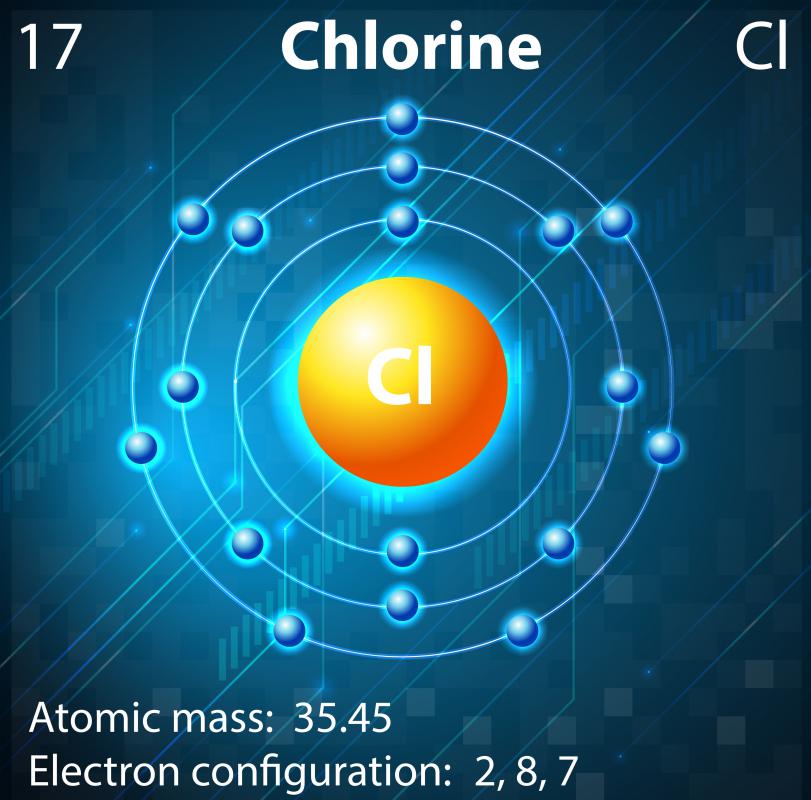At WiseGEEK, we're committed to delivering accurate, trustworthy information. Our expert-authored content is rigorously fact-checked and sourced from credible authorities. Discover how we uphold the highest standards in providing you with reliable knowledge.
What Are Displacement Reactions?
A displacement reaction is one in which an element or group is displaced from a chemical compound by another element or group. In single displacement reactions, the more reactive element displaces the less reactive one. In double displacement reactions, which most commonly take place between aqueous solutions of ionic compounds, the positively charged cations and negatively charged anions swap around. The reaction generally proceeds because one of the products is insoluble and is precipitated as a solid or evolved as a gas, or because the reactants are an acid and a base, which will always produce a salt and water.
Single displacement reactions include the replacement of a metal in a salt with a more reactive metal. For example, iron will displace copper from a copper sulfate solution because it is more reactive: Fe+ CuSO4 -> Cu + FeSO4. This type of reaction can be used for metal plating.

Metals that are more reactive than hydrogen will displace it from acids. For example, if zinc is added to hydrochloric acid, the reaction will produce zinc chloride and hydrogen, because zinc is more reactive than hydrogen: Zn + 2HCl -> ZnCl2 + H2. Metals that are less reactive than hydrogen — for example copper, lead, silver and gold — will not displace it from an acid.
The well known thermite reaction, in which powdered aluminum is used to displace a metal from a compound, usually an oxide, is an example of a displacement reaction between solids. In its most common form, iron is produced by the reaction of aluminum with iron III oxide: Fe2O3 + 2Al -> 2Fe + Al2O3. So much heat is evolved that the iron is released as a white hot liquid; it is sometimes used as a method of welding together broken rail tracks.
Displacement reactions between non-metals are also common. An example is the displacement of iodine from an iodide salt by chlorine. Chlorine is more reactive than iodine, so if chlorine gas is bubbled into a solution of sodium iodide, it will displace the iodine: 2NaI + Cl2 -> 2NaCl + I2. This method is used for the industrial production of iodine.
An example of double displacement is the reaction of barium chloride and sodium sulfate solutions. When these are mixed, they react to produce sodium chloride and barium sulfate. The latter is insoluble and forms a precipitate: BaCl2 + Na2SO4 -> BaSO4 + 2NaCl. Barium chloride solution can thus be used to test for sulfate ions.
Acid-base reactions are another form of double displacement. These are also known as neutralization reactions. For example, hydrochloric acid and sodium hydroxide will react to produce sodium chloride and water: HCl + NaOH -> NaCl + H2O.
AS FEATURED ON:
AS FEATURED ON:











Discussion Comments
When you mix elements like this and this displacement takes place it is called a chemical reaction. Chemical reactions happen every day and you don't probably even think about it. It's this type of reaction that is used in hand warmers and glow sticks.
When a chemical reaction happens it sometimes releases a lot of energy. This energy is often released in the form of heat. This release of energy can sometimes be so strong and fast that it is explosive.
There are other reactions that don't release energy, but suck energy up. When a reaction sucks energy from around it, the most common energy available is heat. It basically turns the area around it cold. Sometimes it becomes so cold so fast it too is explosive. Depending what container it is in, it can cause the container to shatter.
This is a good thing to keep in mind in certain workplaces. This act of displacement reactions is why it is best to not mix different cleaners in a closed room.
Post your comments